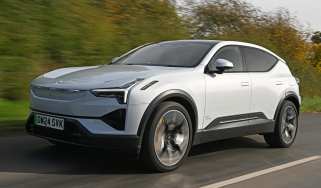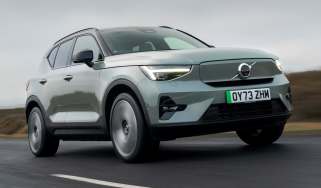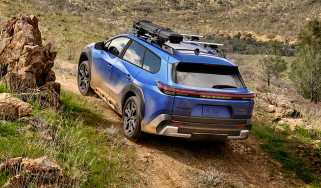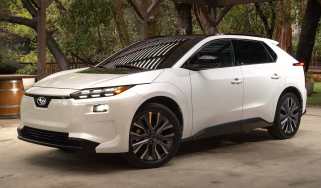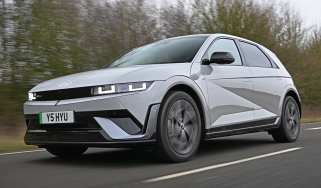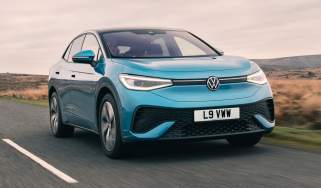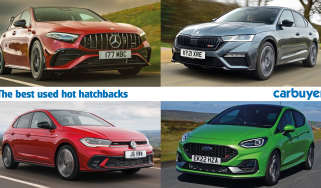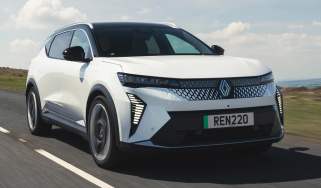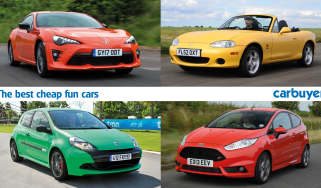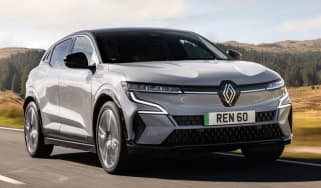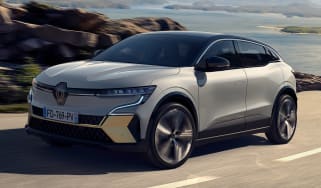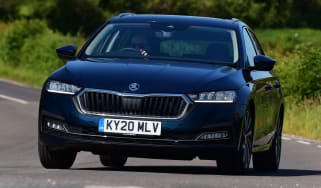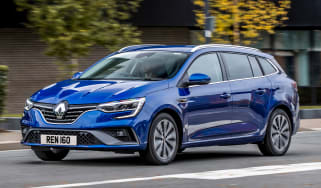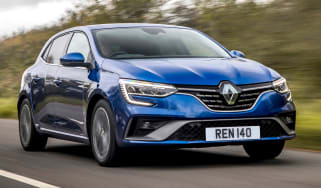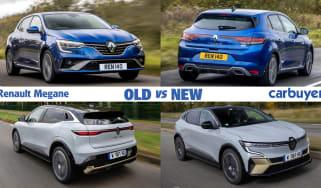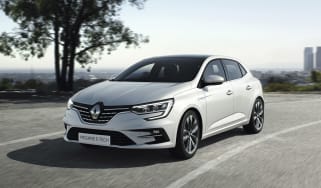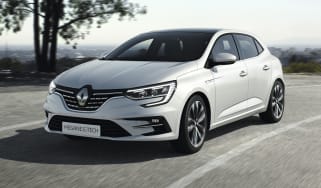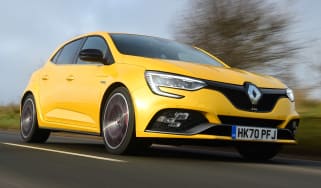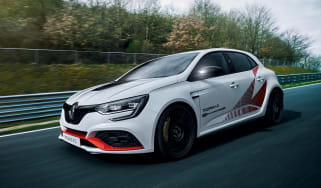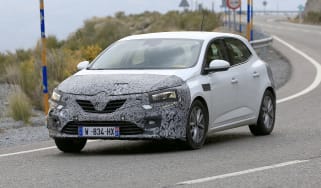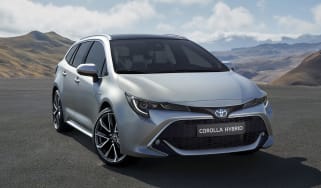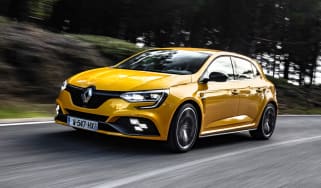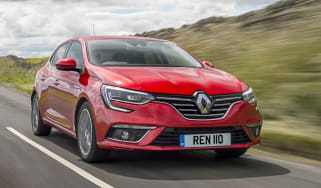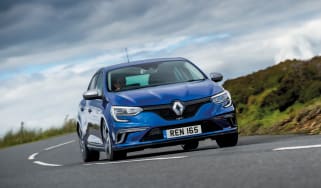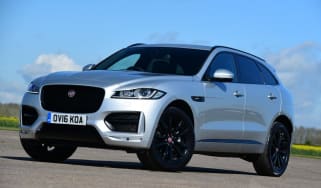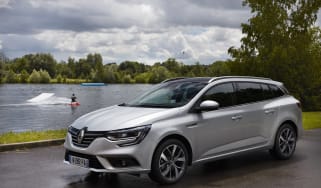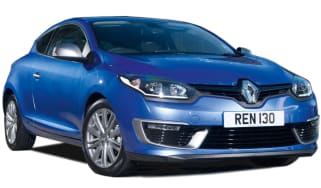Renault Megane E-Tech review – a sporty, yet comfortable EV
“The first all-electric Renault Megane is a trendy and tech-filled family car that offers an enjoyable driving experience and good range, but lacks a bit of space”
Pros
- Great interior
- Sporty and comfortable
- Stylish
Cons
- Tight rear space
- No one-pedal driving
- May be expensive
Verdict – is the Renault Megane E-Tech a good car?
The Renault Megane has benefited greatly from its transition to running on electric power, being more compelling than its petrol predecessor has ever been. The newly-named Megane E-Tech boasts a stylish design, a big boot and one of the slickest infotainment systems in its class. The plug-in Megane has become a thorn in the side for rivals from Kia, Volkswagen and Smart that deserves your attention.
Renault Megane E-Tech models, specs and alternatives
Family hatchbacks are slowly becoming a thing of the past, and the Renault Megane has long struggled for sales against the likes of the Ford Focus and Volkswagen Golf. The latest Megane takes a more radical approach, and is now reborn as a fully-electric family hatchback with SUV-inspired styling. It’s a rival to other small electric family cars such as the Cupra Born, Volkswagen ID.3, Citroen e-C4 and forthcoming Kia EV4.
 The 10 best electric cars in 2025
The 10 best electric cars in 2025
The Renault Megane E-Tech Electric has the same focus on style as previous generations of Megane. Slim LED headlights and a sculpted bonnet give the front end a distinctive look, while there’s a near-full-width light bar at the rear, flush door handles, gold detailing and a sloping roof. While it looks striking, the angle of the contrasting roof means the rear window is very narrow.
An update for mid-2024 saw the price cut by around £500 across the range, at the same time more kit was added, and the Megane now starts from around £34,000. One of the most significant improvements was the arrival of a standard heat pump, which is said to improve range by up to 9% in colder weather.
Inside is just as eye-catching thanks to a 12.3-inch instrument display and the 12-inch central screen that sits alongside it, angled towards the driver. It’s also more traditional and user-friendly than a Volkswagen ID.3, with its frustrating touch-sensitive sliders. The infotainment screen runs a Google-powered system with an excellent voice control setup, while physical buttons and dials for the climate control have been retained, making it a class-leading setup. There are a few hard plastics here and there but overall the interior feels more upmarket than Renaults of old, and lower trim levels feature a lot of recycled materials to boost sustainability.
The news isn’t so great if you’re destined to sit in one of the back seats, however. While the new Megane is a little more spacious than the old one, it doesn’t give the same feeling of space that we’ve become accustomed to in electric cars. The Megane’s arch rival, the ID.3, feels roomier for those in the rear seats. More impressive is the 440-litre boot, even if the high loading lip means loading heavy items can be tricky.
Currently, the Megane E-Tech is only offered with one electric motor setup; however, there are three trim levels to choose from: Evolution, Techno and the range-topping Iconic. Evolution replaced the Equilibre trim level in 2024 as the new entry-point to the Megane range and added more equipment to the old model’s already impressive list of standard kit.
As of summer 2024, all Meganes come fitted with LED exterior lighting, heated seats, a heated steering wheel, a reversing camera and an efficiency-boosting heat pump. We recommend stepping up to the mid-spec Techno trim, though, as this adds a larger 12-inch infotainment screen in place of the Evolution’s nine-inch item, as well as a few more luxuries and electric journey programming with Google Maps.
Renault has certainly been bold when it comes to shifting its Megane model to all-electric; one area where Volkswagen is still minimising risk by keeping the Golf and ID.3 separate. The Megane E-Tech is good to drive and has an excellent interior. Those who think it is rather expensive may be swayed by the MG4, but there is an extra layer of quality the Renault offers for the extra cash. Plus, Renault's aggressive pricing goes some way to make it more competitive against EV newcomers from China. It also tends to be available on compelling PCP and PCH leasing deals, if you don’t plan on owning the car outright.
Think the Renault Megane could be the EV for you? Take a look at deals on the Megane on our sister site Auto Express
Range, charging & running costs
| Pros | Cons |
|
|
Renault has focused on making the new Megane as light as possible, with lots of aluminium used in its construction. While the battery ensures the car is no featherweight, the 1,624kg kerb weight of our test car is nearly 200kg less than an equivalent ID.3, which improves efficiency. Renault is aiming for accurate range figures rather than impressive but unrealistic ones.
The French-built electric motor – which differs from the motor found in the Nissan Ariya – is also free from any rare earth materials, which along with the 20kg of recycled materials found in every Megane, helps towards reducing its environmental impact.
The 60kWh battery offers an official range figure of up to 285 miles on a full charge. We’ve struggled to match this in testing, achieving as much as 250 miles from a full charge in the summer months, and just 180 miles in colder conditions. When we put the Megane head-to-head with the Skoda Elroq, the Renault managed 3.8 miles/kWh in cool conditions – only just sneaking ahead of the bigger Skoda that returned 3.7 miles/kWh. This would equate to a range of 228 miles for the Renault.
In 2024, the Megane range was updated to include a heat pump across all models, something that was previously only available with the Techno and Iconic trims. It improves the range of the battery in wintry conditions by warming the battery and cabin to optimum operating temperatures more efficiently.
Fast charging at up to 130kW means a top-up from 15-80% can be achieved in half an hour, which is decent, but not as blazing fast as some of the latest EVs – the Elroq can charge at up to 175kW with a 77kWh battery fitted. A full charge from a 7.4kW wallbox takes just over nine hours, which can be reduced to just over six hours using an 11kW three-phase power source. Unlike quite a few rivals, the Megane E-Tech also comes with support for 22kWh AC charging as standard. While this isn’t as quick as DC rapid charging, public AC chargers tend to be quite a bit cheaper, so it could suit some buyers who are parking for a while anyway. Depending on your electricity tariff, a full charge at home should cost less than £10. Following changes in April 2025, EVs are no longer exempt from VED (road tax) but company-car drivers will pay the lowest rate of Benefit-in-Kind tax.
The Renault Megane E-Tech Electric used to get a five-year/100,000-mile warranty, but this has since been reduced to three years/100,000 miles, making it a somewhat less attractive proposition for buyers. There’s also an eight-year/100,000-mile battery warranty like the one you get with the Renault ZOE, which covers you if the battery capacity drops below 70% during the cover period.
Electric motor, drive & performance
| Pros | Cons |
|
|
Renault’s boss apparently remarked that the Megane felt like an electric hot hatch when he drove it. While we wouldn’t go quite that far, the new Megane is thoroughly decent to drive. We found it to be very quick off the line, offering rapid acceleration right up to the national speed limit. The electric motor produces 217bhp and offers a 0-62mph time of under 7.5 seconds –- and it feels quicker than that. Unlike many other modern cars which hide driving modes through submenus in the infotainment system, we like the Megane E-Tech’s driving mode selector mounted on the steering wheel, making it easier to switch on the fly. However, we prefer its Normal driving mode, as Sport makes the accelerator a little too sensitive for smooth driving.
Because the Megane E-Tech is quite light for an electric car (weighing just under 1,700kg) and because most of the weight is low within the car, there’s almost no body roll whatsoever. Its steering is pleasingly quick, if short of feel, and the suspension keeps the ride well controlled, even if it is on the firm side – especially with 20-inch alloy wheels fitted. Flicking between Eco, Comfort, Sport and Individual driving modes changes how the car feels, increasing the response of the throttle pedal and heft of the steering. You can also choose what level of brake regeneration you want, but you can’t drive it just with one pedal as you can in a Nissan Leaf – it slows quite sharply, but will still creep forwards instead of coming to a halt.
Refinement is a real strong point, with road and wind noise mostly kept out of the cabin, along with any rattles from the suspension. The only annoyance is the fidgety low-speed ride, which doesn’t settle on rough surfaces. Larger bumps aren’t so much of an issue, however – the suspension deals with these well. We drove the Techno model with 20-inch alloys, but we suspect the smaller 18-inch wheels on Evolution models will make the Megane E-Tech better suited to Britain’s ageing roads.
Even on the motorway, the Megane still feels like it has plenty of power to pass slower traffic and it’s planted and secure. Again, it’s a shame its suspension isn’t a bit softer to make things even more relaxing, as offered by the larger Renault Scenic.
Interior & comfort
| Pros | Cons |
|
|
Open the door with the pop-out handle and you’re greeted by a state-of-the-art interior that feels comfortably ahead of the Volkswagen ID.3 for quality and ergonomics. That said, it’s not quite as funky as that of a Smart #1, but we prefer the Megane E-Tech’s balance between touchscreen-based controls and the physical climate controls. We found its seats to be comfortable and supportive, even when tackling long journeys.
Materials impress too, with lots of nicely textured fabrics from sustainable sources, including a fabric covering for the dashboard. We’re not huge fans of the glossy black surfaces, though, which tend to pick up fingerprints and scratches rather easily.
Entry-level Megane Evolution models get a nine-inch infotainment screen, while Techno and Iconic models get a larger 12-inch screen from mid-2024. Both run the same Google-powered system, so you’ll navigate through Google Maps and can say commands with “Hey Google” – we think this is a good move rather than the brand developing its own software, as Google delivers superbly accurate journey planning and reliable real-time traffic data, and the system is continually improved via over-the-air updates. The mapping app includes nearby public chargers, while the voice control system is the best we’ve come across, letting you change the temperature and find out the weather forecast just by asking, and easily understanding your commands.
Renault claims the screen is the sharpest in its class and as responsive as a smartphone, and we did find loading times excellent – Apple CarPlay also comes as standard. The map can be shown on the car’s large 12.3-inch digital driver’s display, which looks bright, clear and easy to use. A digital rear-view mirror is also available to overcome the poor visibility from the shallow rear window.
It’s tempting these days to pack all controls into the touchscreen but Renault has kept physical climate controls that are easier to use when driving. This, and the materials used, help to make the Megane feel more upmarket inside than the ID.3. There are some cheaper materials on display but overall the quality is very good.
Is the Renault Megane well equipped?
Trim levels start with Evolution, which gets a 12.3-inch instrument display, nine-inch infotainment screen, rear-view camera and rear parking sensors, along with a heated steering wheel, heated seats, adaptive cruise control, 18-inch alloy wheels and USB Type-C ports for the front and rear occupants.
You’ll need to upgrade to Techno trim for the larger 12-inch infotainment screen, as well as wireless smartphone charging, front parking sensors and cruise control with lane centering. In this guise, the Megane E-Tech is still slightly cheaper than a mid-range Kia Niro EV. Techno also comes with larger 20-inch alloy wheels, which look stylish, but could be a concern if you live in an area with lots of poor roads and potholes.
Finally, there’s the Iconic range-topper which includes a model-specific set of alloy wheels, F1-inspired gold exterior trim, a digital rear-view mirror and a nine-speaker Harman Kardon stereo system. This trim also includes adaptive high beam, which individually blocks out other drivers at night when the high beams are on, to avoid dazzling them. A surround-view parking display should also make tight spaces easier to negotiate, while a standard-fit heat pump should help the Megane get closer to reaching its target range figure in the colder months.
Practicality & boot space
| Pros | Cons |
|
|
You’d expect the combination of a crossover hatchback body style and a dedicated platform for electric motors to mean the Megane E-Tech Electric is very spacious, but this is one of the few areas where we think the Renault could improve. Space in the rear seats is probably on a par with the old car but you feel a little too close to the front seats, which could well be within kicking distance for children in car seats. If that’s an issue, the bigger Renault Scenic E-Tech offers lots of legroom for a small increase in price. It is nice to see, however, that the Megane offers two ISOFIX child-seat mounting points in the back, and a third in the front passenger seat for more flexibility.
Head and knee room feel similar to the Volkswagen ID.3, making it very spacious for passengers. The only downside is a floor that feels slightly high in relation to the rear bench, so anyone with long legs may feel thigh support is lacking. There’s also no rear central armrest and you’ll only find USB ports in the top trim level. A small rear window and thick C-pillars also mean that rear visibility is poor.
The boot is large at 440 litres and it’s deep too. Fold down the rear seats and it can be expanded to 1,332 litres – beating the 1,267 litres of the Volkswagen ID.3. The Megane is front-wheel drive, so doesn’t have a motor on the rear axle that takes up space. Its depth means that it could well be a struggle to lift heavy or bulky items in and out. Beneath the floor, there’s also some extra storage to hide valuables or the charging cable, and we liked the inclusion of storage nets and a boot protector that doubles as a modular storage tidy.
When we tested the Megane E-Tech we found that because the boot release is so small and sits flush with the tailgate, it’s hard to find it in the dark, and it tends to get covered in road grime.
Reliability & safety
| Pros | Cons |
|
|
While other manufacturers are just dipping their toes in the water when it comes to electric cars, Renault has already waded in. The Renault ZOE was launched over a decade ago, and has only recently been replaced by the Renault 5. During that time, the French brand has consistently improved its powertrains, batteries and their durability over time. Underpinning the Megane E-Tech is a new platform but it’s one that has been co-developed with Nissan, which has also sold mass-market electric cars for the last decade. The Megane shares its ‘CMF-EV’ architecture with the Nissan Ariya and the Renault Scenic, positioned just above the Megane.
Renault achieved a disappointing 28th position out of 32 brands in our 2024 Driver Power owner satisfaction survey. The company’s cars were praised for their low running costs and affordable servicing, but were scored down for poor interiors and front seat comfort – areas we think newer models like the Megane E-Tech should help improve scores. The Megane E-Tech should be cheaper to service than a petrol or diesel car thanks to a reduced number of consumables like oil and spark plugs, along with fewer parts like a clutch that are likely to wear out.
The Megane E-Tech achieved a five-star Euro NCAP rating, which is pretty much standard for an electric family-size car and was bolstered by an impressive 85% rating for adult occupant protection. It adds to an impressive tally, with the latest Renault Captur, Renault Clio and Renault Arkana all getting five stars. Level 2 semi-autonomous driving is available, combining lane-keeping assist with adaptive cruise control.

